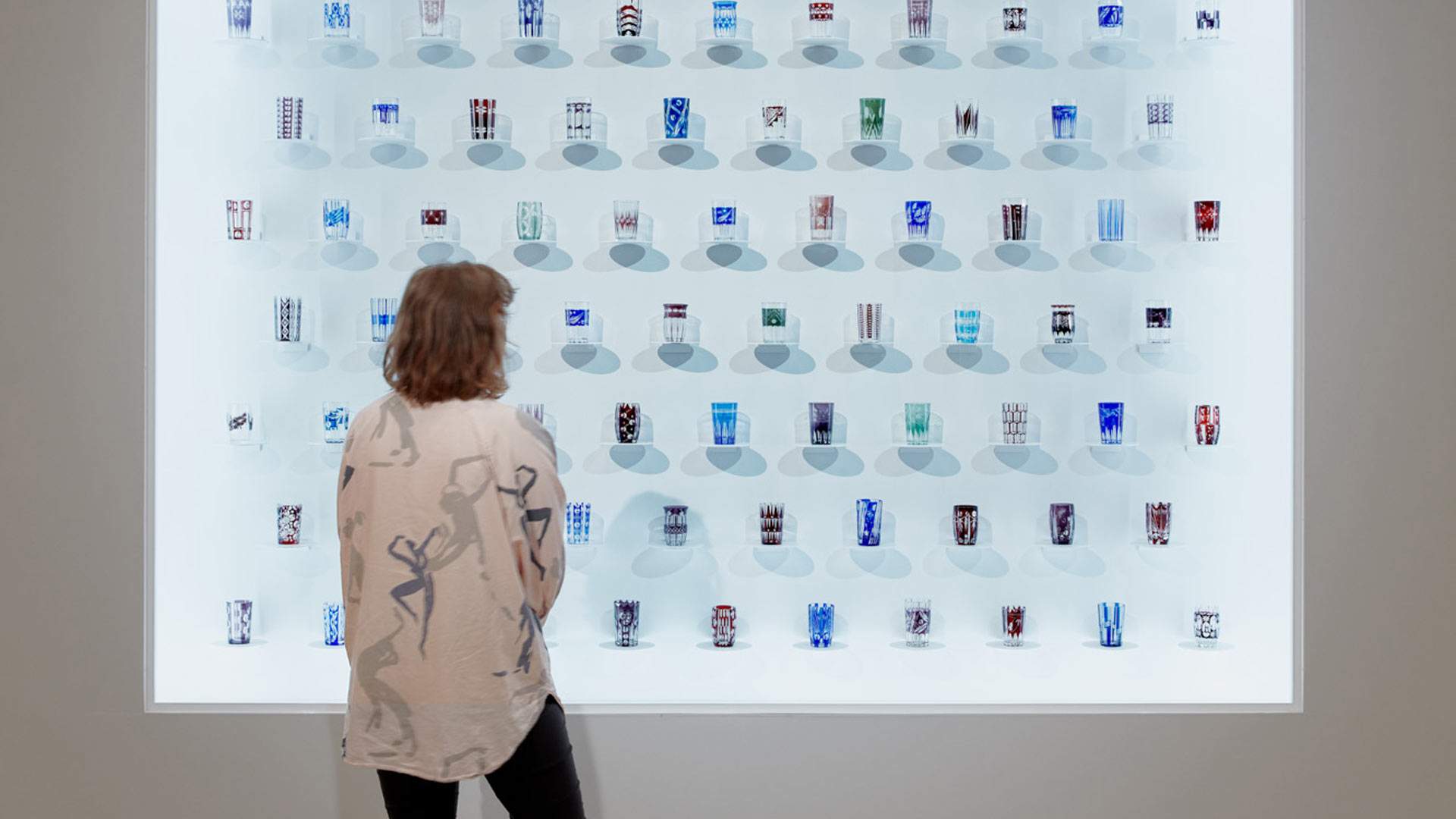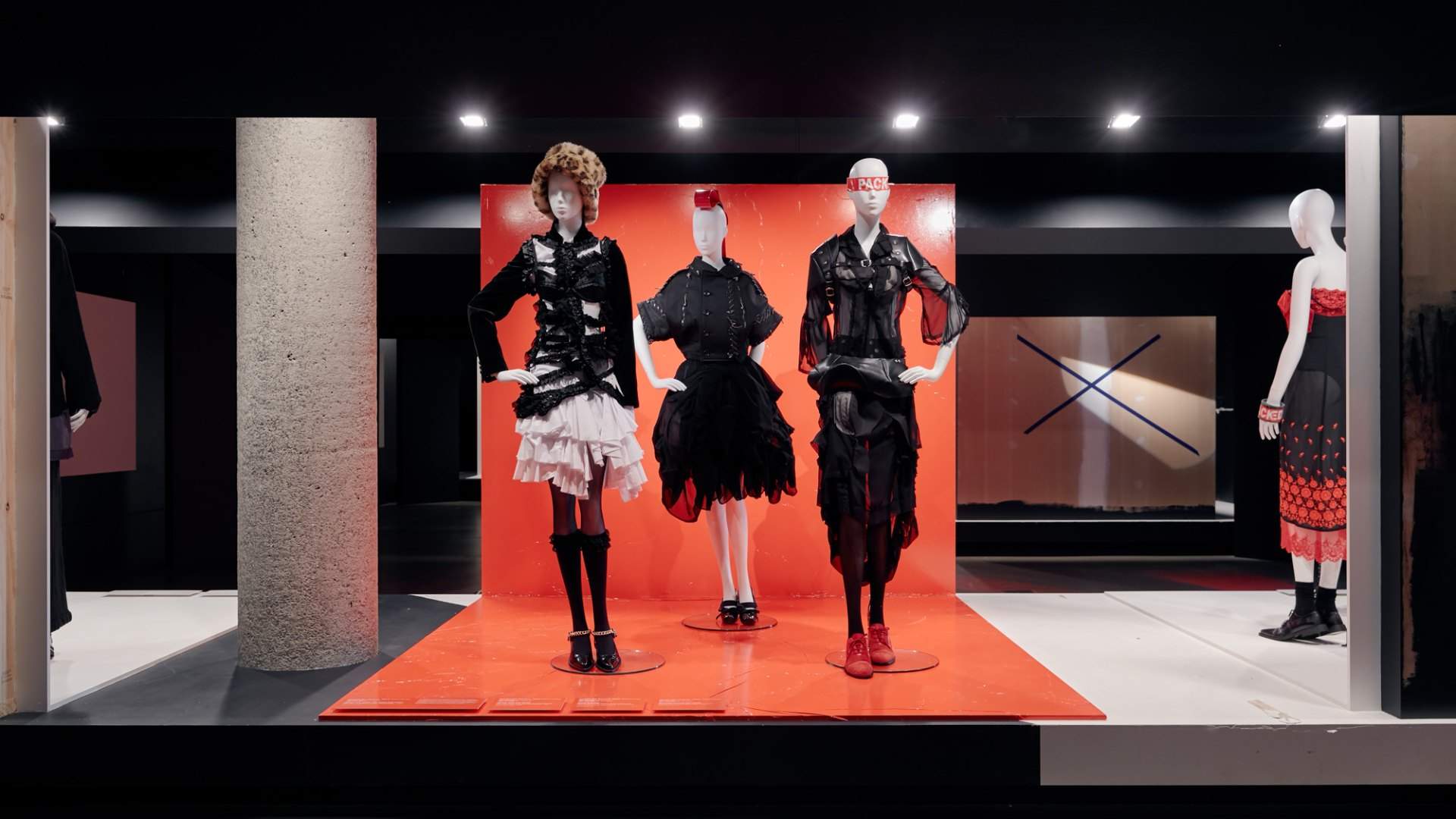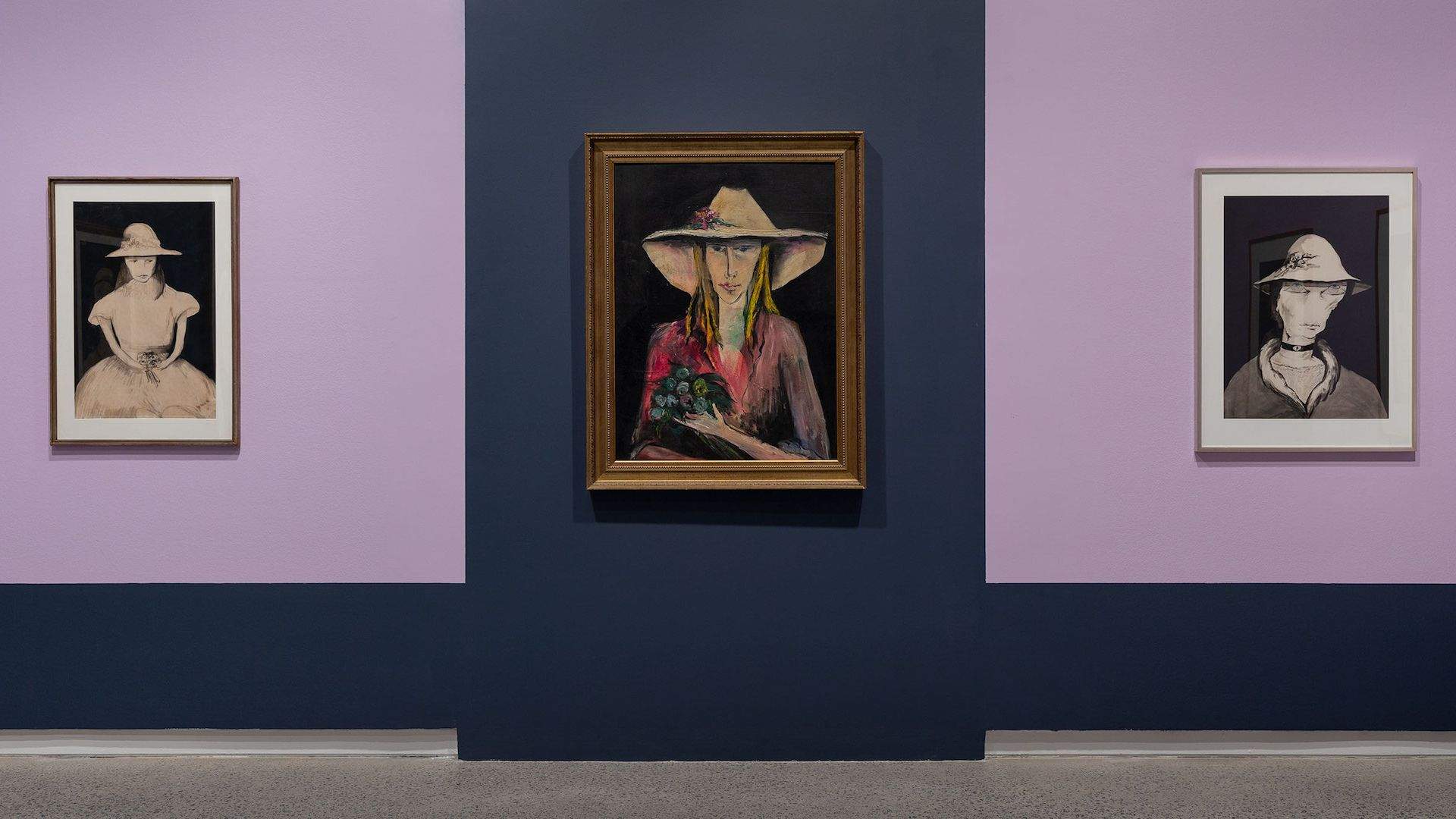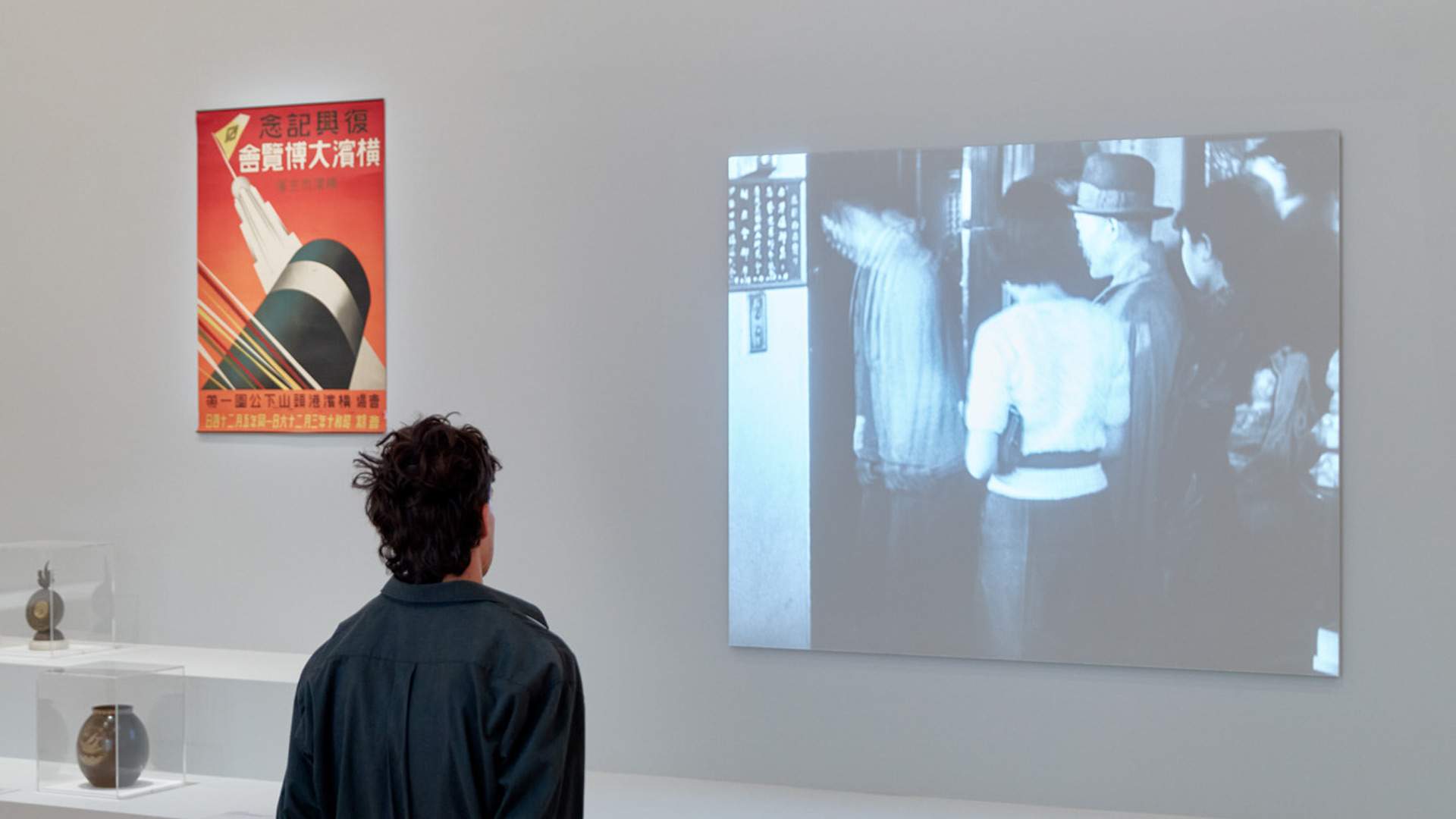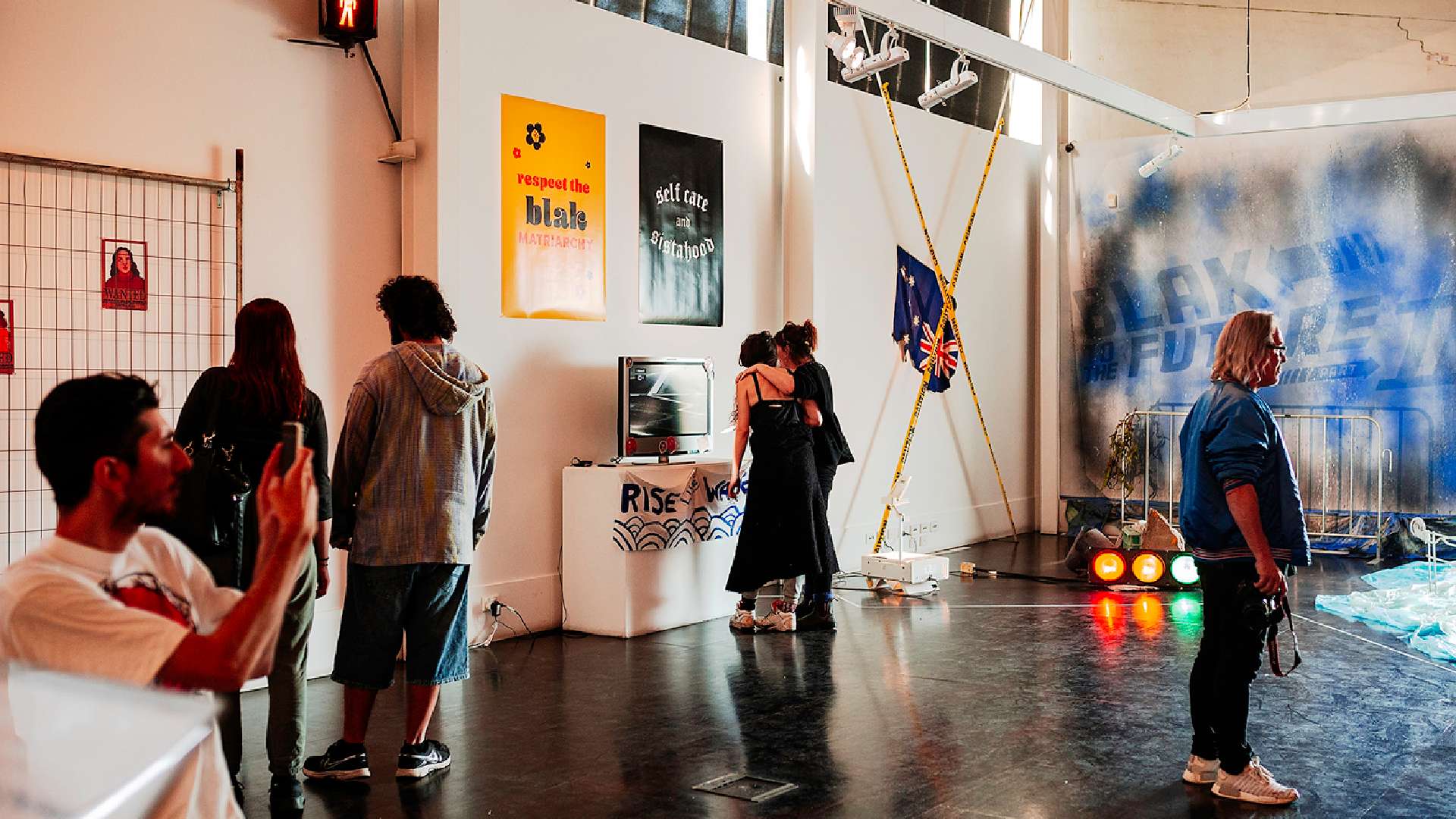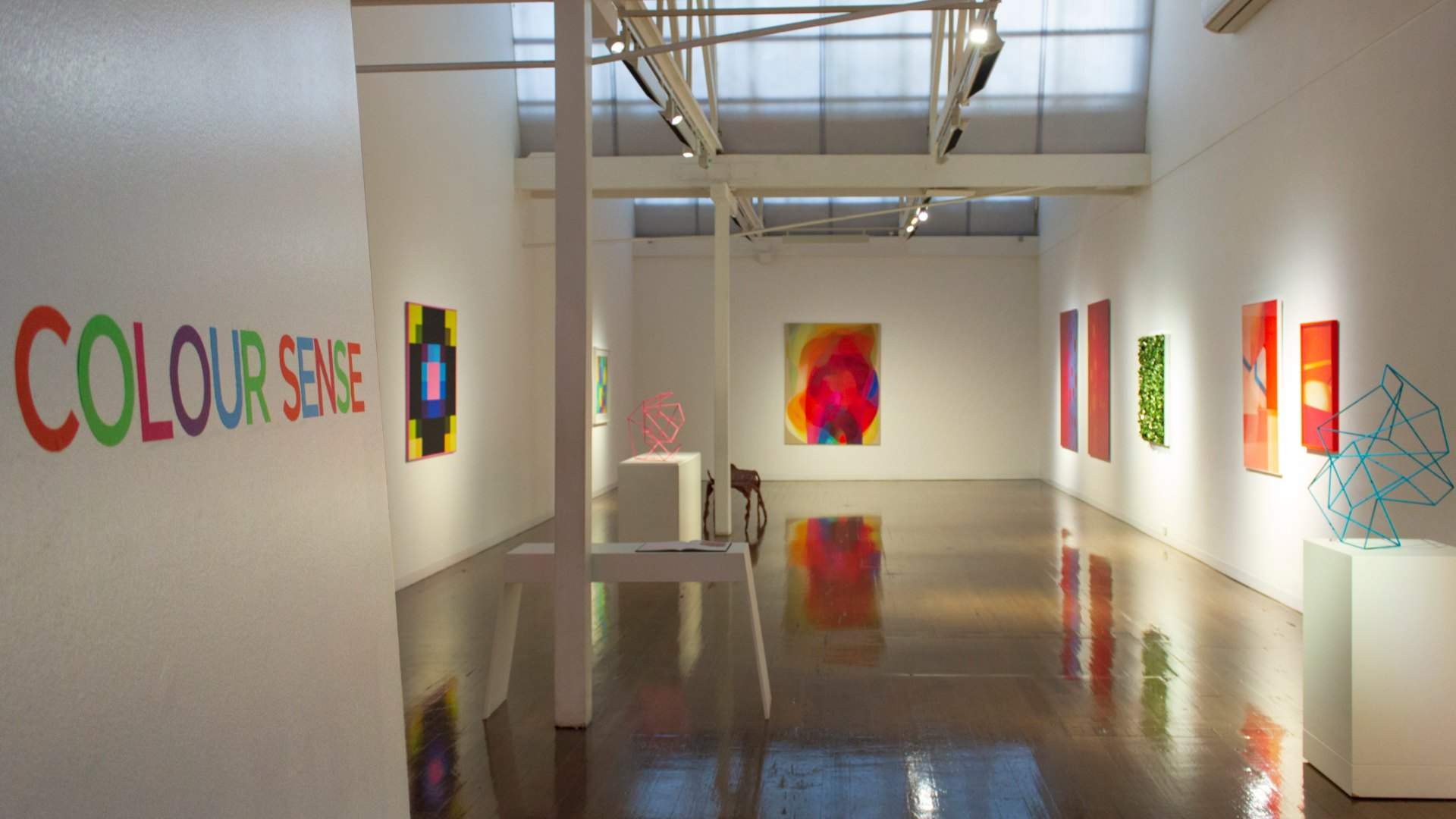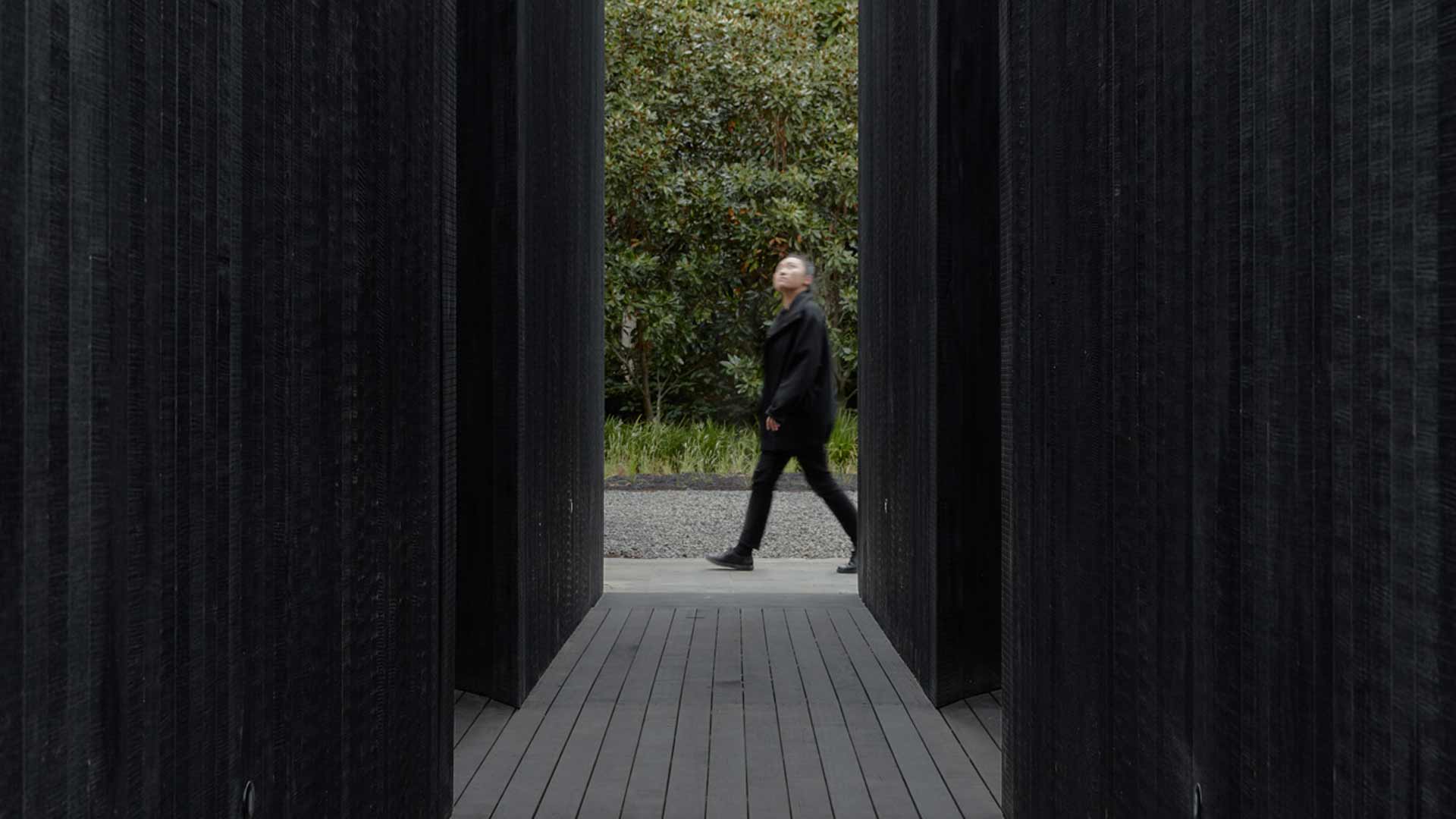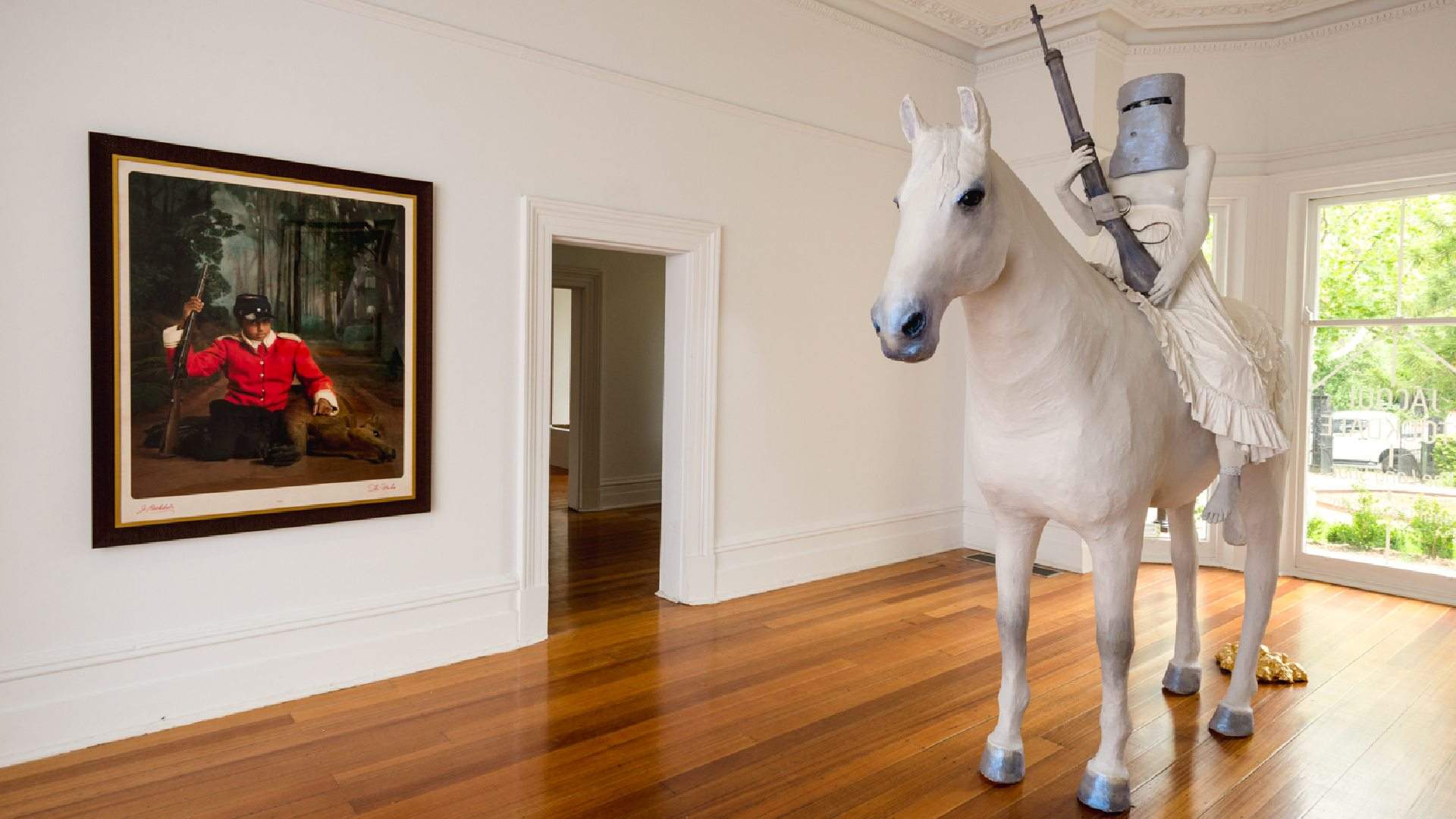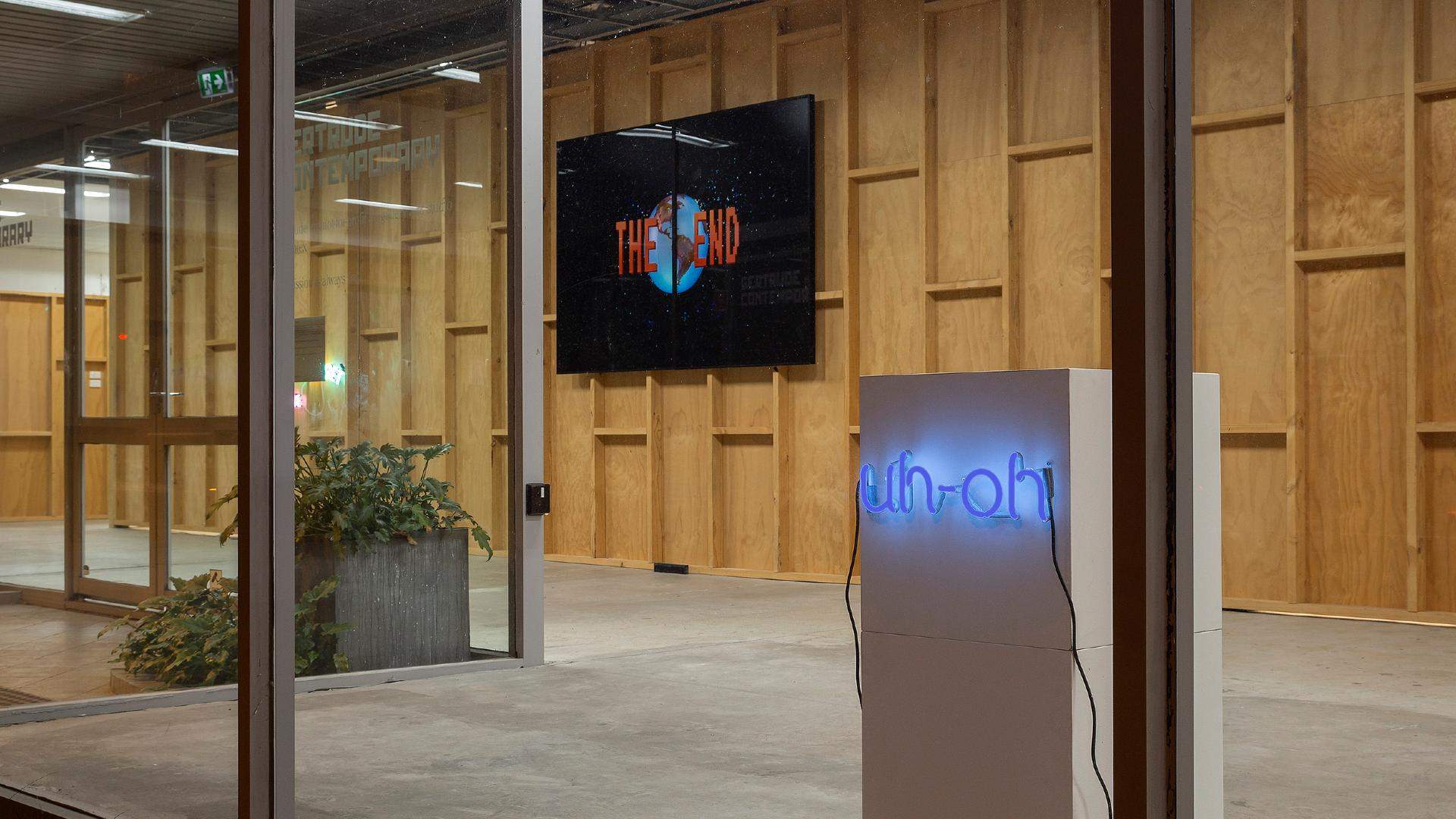Melbourne's Best Art Exhibitions You Can Visit IRL This Winter
You can now wander through a towering dark structure, catch a blockbuster exhibition about Japanese art and ogle a sculpture cast from real dung.
Melbourne's Best Art Exhibitions You Can Visit IRL This Winter
You can now wander through a towering dark structure, catch a blockbuster exhibition about Japanese art and ogle a sculpture cast from real dung.
Your art and culture fix has likely looked a little different than usual the past few months, as Aussies sank deep into #stayathome mode, and institutions like galleries and museums shut their doors to the public in accordance with COVID-19 guidelines. With crowds and gatherings off the menu, a slew of large-scale art events and exhibitions were forced to cancel, postpone or switch to the digital realm.
But as of June 1, the Victorian Government has given the green light for museums and galleries to reopen to a limited number of visitors. Yep — along with regional road-trips and restaurant dinners, real-life gallery-hopping is back on the cards.
From this month, you can catch a much-anticipated solo show dedicated to modernist icon Joy Hester, check out a pandemic-inspired group exhibition and delight in decades of trailblazing threads by Japanese fashion label Comme des Garçons at the NGV. Here are our top picks of Melbourne art exhibitions you can visit IRL this winter.

From 11.59pm on Wednesday, July 1, until at least Wednesday, July 29, stay-at-home orders have been reintroduced in ten Melbourne postcodes, which means their residents can only leave for one of four reasons: work or school, care or care giving, daily exercise or food and other essentials. For more information, head to the DHHS website.
-
8

It’s safe to say Rei Kawakubo, founder of Japanese label Comme des Garçons, is up there among the fashion world’s most influential designers. Kawakubu launched the seminal label back in 1969 and held its debut show in Paris in 1981 — now, a selection of the trailblazer’s best works have been brought together for Australia’s first exhibition dedicated to Comme des Garçons. Visitors to Collecting Comme can get up close and personal with more than 65 of Kawakubo’s visionary outfits, in a roll-call of highlights plucked from over 40 different collections. These pieces are complemented by a further 13 standout designs by two of Kawakubo’s protégés: Junya Watanabe and Tao Kurihara. Revisit the oversized, textural and asymmetrical designs of early 80s Comme des Garçons, including purposely distressed garments like 1982’s infamous hole-and-dropped-stitch Sweater from the Holes collection. Later works show how Kawakubo adopted punk elements and unconventional fabrics to question perceptions of women’s social roles and redefine taste, while proposing a new relationship between our bodies and clothes.
Images: Installation view of ‘Collecting Comme’ at NGV International. Copyright Comme des Garçons. Photo: Tom Ross.
-
7

When public health guidelines prompted Heide Museum of Modern Art to close for the best part of four months, it also delayed a much-anticipated major survey show. But now, the wait is over and the gallery finally gets to celebrate 100 years since the birth of one of the country’s most significant modernist talents, with the real-life launch of Joy Hester: Remember Me. It’s the first solo exhibition of Hester’s art in close to two decades. Kicking off as soon as Heide reopens its doors on June 30, the show features over 140 of Hester’s works, sourced from a variety of public and private collections. Here, you’ll get a strong sense of the artist’s unique flair and non-traditional stylings, across a wide-ranging catalogue that spans two decades and includes plenty of drawings never before shown in public. Joy Hester: Remember Me showcases the progression of this Aussie artist’s influential career, tripping from early pieces created amid the turbulence of World War II, through to later series of portraits from the 1950s. Right across this hefty body of brush and ink work, the icon continues her flirtation with the provocative, exploring signature themes of love, sex, birth and death to powerful effect.
-
6

The NGV has charted the history of Japanese art quite extensively over the last few years with its Hokusai exhibition in 2017 and subsequent look into the influence that late 19th century artists had on western modern art. Its next Japan-centric exhibition, Japanese Modernism, skips forward to the 1920s and 30s — a time that spawned financial independence for women and access to international travel, and saw the cities gain movie theatres and department stores. This filtered down Japan’s art and fashion, and can be seen in Art Nouveau-printed kimonos and Art Deco paintings, posters and wood block prints. Included in the exhibition will be a 36-print work commissioned by publisher Hoshino Seki in 1924, called The Great Taisho earthquake and fire, which show the aftermath of 1923’s devastating Kanto earthquake — it had a huge impact on Japanese society at the time. Taniguchi Fumie’s 1935 six-screen work Preparing to go out, also part of the exhibition, conveys society’s attitudes towards women and consumerism at the time. Kimonos, glassware and bronzeware also feature, too.
Images: Installation views of Japanese Modernism at National Gallery of Victoria. Photos by Tom Ross.
-
5

Originally scheduled to run in April as part of the now postponed Wominjeka Festival’s tenth anniversary edition, this thought-provoking exhibition will instead kick off from Tuesday, August 4. As with all of the festival’s parties, workshops and events, Blak to the Future III is a project helmed by First Nations peoples — this one’s been put together by artist and curator Rosie Kalina.
Showing for free at the Footscray Community Arts Centre’s Roslyn Smorgon Gallery, the exhibition features works from a dynamic group of young creatives, offering a collective peek at a decolonised Aussie future.
Emerging Indigenous talent including Soju Gang, Kyle Taylor, Caleb Thaiday, Tre Turner and Kalina herself deliver a broad mix of visual art works and textile pieces designed to get you thinking. And don’t miss the sprawling collaborative mural, which is set to take pride of place within the exhibition space.
Image: Gianna Rizzo
-
4

We could all use a bit of vibrancy in our lives right now and this new exhibition at renowned contemporary art gallery Arc One is happy to deliver. Running from June 3 to July 25, group show Colour Sense is the perfect, bold-hued antidote to all that time you’ve spent cooped up on the couch of late. Plus, it’s sure to take the edge of any dreary winter chills. This curation of works comes from a lineup of contemporary Aussie artists celebrated for their use of primary colours, who’ve got a proven knack for creating hard-hitting works from a palette of bright, vivid hues. Get set to boost your mood with a rainbow of visual treats from the likes of Lydia Wegner, Jacky Redgate, Peter Daverington, Dani Marti, John Young, Pat Brassington and the acclaimed Robert Owen. Works span a variety of themes and influences, from Owen’s geometrical pieces, to a series of heady textural designs by Barcelona-born Marti.
Top image: Colour Sense, installation view at Arc One Gallery, 2020.
-
3

The NGV’s Grollo Equiset Garden is playing host to a striking new addition, thanks to the arrival of towering architectural installation In Absence. Taking out the title of 2019 National Gallery of Victoria Architecture Commission, the design is the work of contemporary Indigenous artist Yhonnie Scarce and Melbourne architecture studio Edition Office. It beat 99 other designs in this year’s competition, which invites participants from across the country to create a site-specific work of temporary architecture to grace the gallery’s famed gardens. Drawing from the structures and building practises of pre-colonial Australia, In Absence boasts a soaring, dark timber tower, opening up to multi-textural interiors. Scarce has used thousands of small black glass yams to bring to life a pair of internal voids, in another nod to the past. The looming tower structure is the latest in an impressive lineup of Architecture Commission winners, joining the ranks of previous designs like 2018’s sleek bamboo garden and deck, 2017’s maze-like Garden Wall and 2016’s playful pink carwash design by M@STUDIO Architects.
Images: Installation view of In Absence, 2019 designed by Yhonnie Scarce and Edition Office for the 2019 Architecture Commission at NGV International, Melbourne. Photo: Tom Ross.
-
2

St Kilda gallery Linden New Art has reopened to the public following lockdown, now taking limited visitor bookings across two sessions from Tuesday–Friday: 11.30am to 1pm and then between 2pm and 3.30pm. One of three exhibitions on its starting lineup, The Long Shot stars a new collection by award-winning Victorian artist Jacqui Stockdale. Both locally celebrated and with a slew of international exhibitions under her belt, Stockdale is known for her symbolic, theatrical works, delivered through a diverse catalogue of painting, drawing, collage, photography and performance art.
Tied to the artist’s continued exploration of Australia’s early colonial past, The Long Shot flips the script on some of the more dominant narratives served up throughout our history. Here, catch an alternative version of the infamous Ned Kelly story, which challenges long-held perceptions by honing in on the experiences of the bushranger’s mother, Ellen. It’s an interactive show, featuring a variety of sculptural works — you’ll see a piece cast from real dung that pays homage to the world’s largest ever gold nugget, and even a towering likeness of Kelly’s horse, crafted to the exact dimensions of fellow icon Phar Lap.
Image: Jacqui Stockdale ‘The Long Shot’ exhibition view at Linden New Art
-
1

With its latest exhibition, Gertrude Contemporary set out to capture the messy, unprecedented craziness 2020 has thrown our way, pulling together a collection of recent works from a lineup of local artists. Titled Hope in the Dark, the show came to life in late-March in an unconventional format — an ever-evolving, street-facing exhibition that could be viewed from outside the Fitzroy gallery’s windows.
Now, the venue has announced it’ll open its doors from Thursday, July 23, when visitors will be able to catch the show from inside the gallery spaces for the first time. Featuring pieces from names like Amrita Hepi, Sarah Brasier and Kiron Robinson, Hope in the Dark serves up a multi-faceted reflection on a world in lockdown mode. Expect installations embracing ideas of anxiety, confusion and vulnerability, threaded with a much-needed dose of humour — from a weathered playground slide suspended ominously from the ceiling for Lewis Fidock and Joshua Petherick’s piece Tongue, to Simon Zoric’s tongue-in-cheek neon work.
Image: Christian Capurro
Top image: Installation views of Japanese Modernism at National Gallery of Victoria. Photos by Tom Ross.
